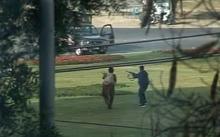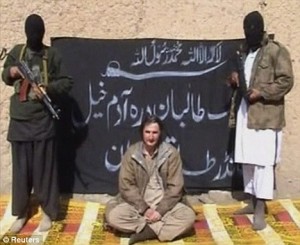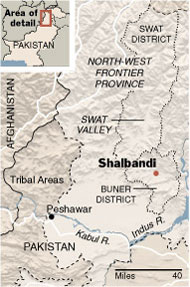Pakistan, Cricket Attacks and India
BY Herschel SmithEarly on there were a number of theories about who sponsored and executed the attack on the Sri Lanka Cricket team in Lahore, Pakistan, on March 3. But the theories seem to be converging on a single suspect. The Asia Times reported on March 5 that the attack was was “carried out by disgruntled Punjabi militants seeking to extract concessions from the government … [who were] working directly under the command of a joint Punjabi and Kashmiri leadership based in the North Waziristan tribal area and allied with al-Qaeda.” Syed Saleem Shahzad goes on to explain the theory.
Before the Swat agreement was inked, the Pakistani Taliban presented their demands. These included a financial package worth 480 million rupees (US$6 million) for compensation for families that had lost members through death or injury or which had lost property as a result of the operations of the security forces. They also demanded the release of prisoners.
The government accepted all of the demands, but it refused to release those prisoners who were not from Swat. At the top of this list was Maulana Abdul Aziz, a radical cleric from the Lal Masjid (Red Mosque) in Islamabad who was arrested in July 2007 while fleeing from the mosque after security forces stormed it. The government also refused to release several other militants, including a very important person, who were recently arrested in Islamabad.
The Punjabi militants were clearly upset at having their demands rejected, while the Pashtuns got what they wanted. The attack in Lahore was meant to redress the “injustice.”
Similarly, the Times reports that Pakistan’s investigation:
… showed that Tuesday’s attackers were from Punjab and North West Frontier Province, which has become the main battleground between militants and Pakistan’s armed forces.
Intelligence sources said that southern Punjab had become the main centre of radical Islamic activities in the country. Despite a ban, groups such as JeM and LeJ had expanded their influence in the area, drawing recruits from among rural poor, they said.
Most of the gunmen involved in the attack on Mumbai in November came from the same region.
JeM has become a virtual extension of al-Qaeda and was blamed for most of the terrorist attacks in Pakistan after the country become an ally in the US-led War on Terror in 2001.
LeJ is an extremist Sunni sectarian group whose members overlap with JeM. It has also been involved in al-Qaeda-led attacks in Pakistan.
But the reaction of some in Pakistan is both telling and important. “Numerous Pakistani analysts have been quick to point a finger at India’s Research and Analysis Wing (RAW) for staging what they say is a tit-for-tat attack on Tuesday, although there is been no official announcement in this connection … retired General Hamid Gul, who is a former head of the ISI, blame India’s RAW.”
Of course he does. Even the Times notes this reaction.
As usual, the kneejerk reaction in Pakistan was to blame Indian intelligence for the attacks. But the authorities now privately admit that the attack was home-grown.
Do they really? Should the Times have been so quick to exonerate Pakistani analysts? An interesting and at times sardonic article entitled After the Taliban Air Force, Time to Battle the Taliban Navy from domain-b.com discusses the U.S.-to-Pakistan largesse and why it is being spent the way it is.
With the recent revelation that the US administration has instructed GE to defer plans to operationalise engines for an Indian Navy frigate programme, it is time to look at how it is proceeding with plans to arm the Pakistan Navy with equipment that can only be utilised against India, writes Rajiv Singh.
Members of the US Congress have been sniggering for years about the funds being allocated to arm the Pakistan Air Force (PAF) with cutting-edge technology to fight what they refer to as the ”Taliban Air Force.” Their sarcasm is aimed, in particular, at the number of contracts awarded to upgrade Lockheed Martin’s Paki fighter- the F-16, which over the past decade of the Bush administration, has been equipped with the best, and most lethal, in sensors, munitions and equipment.
Of course, it is yet to participate in a single tactical operation against the Taliban, or any other entity.
For long, these funds have been allocated to Pakistan under the guise of helping it fight the Global War on Terror (GWOT). At one point of time questions began to be asked of the Bush administration if the contracts, funds and upgrades of the Paki F-16 were aimed only at shoring up Pakistani capabilities against India.
Now, with the great ”agent of change” occupying the White House, and the majority Democrats in the Congress in love with everything he wants to do, the time has come for Indian parliamentarians, at least, to take cognizance of the way the Pakistan Navy (PN) intends to take on the ”Taliban Navy.”
Sometime in February this year, the Pakistan Navy was provided the clearance to acquire three types of anti-submarine warfare (ASW) sonobuoys – totaling 445 units – under the Foreign Military Sales programme. This piece of anti-submarine warfare equipment is of the same class as contracted for the US Navy.
Indeed, the contract signed with suppliers is a joint contract for the US and the Pakistan Navy.
The sale was cleared, presumably, even as the Obama administration was instructing General Electric not to operationalise two new LM 2500 gas turbines it has contracted to supply the Indian Navy for its state-of-the-art, indigenously designed, Project 17 stealth frigates.
The first of three frigates, INS Shivalik, is ready to commence sea trials but the programme will now have to go on hold – at least for a few months –with the Obama administration reviewing its military relations with a number of countries, including India.
What are sonobuoys? These are devices meant to detect, and identify, submarines as they move about stealthily in shallow or deep waters.
The article goes on to conclude that “The right of a nation to arm itself is a sovereign one and no objections can be taken on that score. What we need to look at is the reason why the US is persisting with its cold war strategy of propping up Pakistan militarily against India.”
Authorities in Pakistan may “privately admit” to any number of things, but their actions belie their words. If you want to know the importance the authorities in Pakistan place on things, follow the money. Pakistan is hopelessly obsessed with its neighbor India, a country which poses no threat whatsoever if it senses that Pakistan poses no threat.
Pakistan is a failing state, and more troubling is the fact that it is a nuclear state. But while Pakistan fails, its authorities fret and wring their hands over internal politics, India, largesse, and a whole host of things that are serving as nothing more than distraction from the real threat, Islamic extremism in the FATA and NWFP. This extremism is moving relentlessly from the tribal areas to the urban population centers, even as far South as Karachi.






